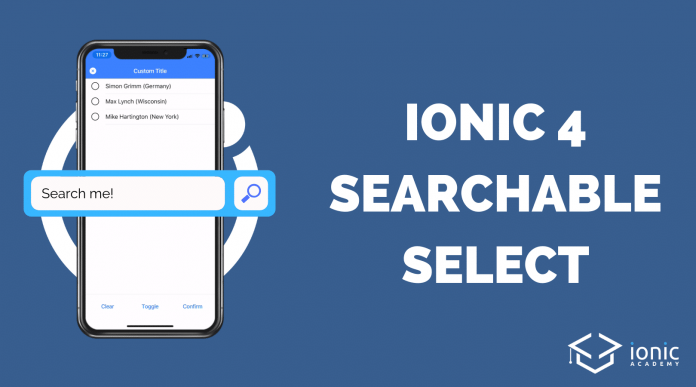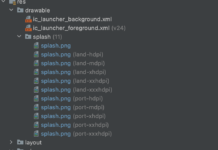
Getting started
- Install it.
// Ionic 3
npm install ionic-selectable@3.4.0 --save
// Ionic 4
npm install ionic-selectable@4.5.0 --save
- Import it.
First, importIonicSelectableModuleto yourapp.module.tsthat is normally located insrc\app\app.module.ts.
import { IonicSelectableModule } from 'ionic-selectable';
@NgModule({
imports: [
IonicSelectableModule
]
})
export class AppModule { }
Note: Additionally, if you use Ionic 3+ you might be as well using lazy loaded pages. Check if your pages have a module file, for example, home.module.ts, and if they do then import IonicSelectableModule to each page module too.
import { IonicSelectableModule } from 'ionic-selectable';
import { HomePage } from './home';
@NgModule({
declarations: [
HomePage
],
imports: [
IonicPageModule.forChild(HomePage),
IonicSelectableModule
]
})
export class HomePageModule { }
- Add it to template.
<ion-item>
<ion-label>Port</ion-label>
<ionic-selectable
item-content // Required for Ionic 3 only.
[(ngModel)]="port"
[items]="ports"
itemValueField="id"
itemTextField="name"
[canSearch]="true"
(onChange)="portChange($event)">
</ionic-selectable>
</ion-item>- Configure it.
import { IonicSelectableComponent } from 'ionic-selectable';
class Port {
public id: number;
public name: string;
}
@Component({ ... })
export class HomePage {
ports: Port[];
port: Port;
constructor() {
this.ports = [
{ id: 1, name: 'Tokai' },
{ id: 2, name: 'Vladivostok' },
{ id: 3, name: 'Navlakhi' }
];
}
portChange(event: {
component: IonicSelectableComponent,
value: any
}) {
console.log('port:', event.value);
}
}
- Enjoy it
- Check out live demos to see what it is capable of.





















